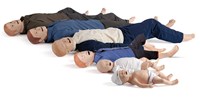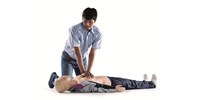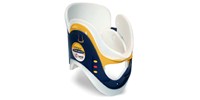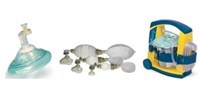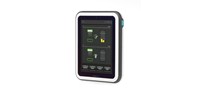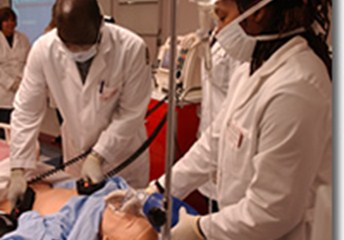University of Maryland School of Nursing
Founded in 1889, the University of Maryland School of Nursing is a nationally ranked, top tier school of distinction. The School enrolls more than 1,400 students in its renowned baccalaureate, master’s and doctoral programs. Additionally, thousands of participants attend professional development programs annually. The School emphasizes the integration of research, education and practice, and serves regional national and international audiences.
The School of Nursing’s Clinical Simulation Laboratories (CSL) are designed to simulate clinical settings, providing undergraduate and graduate students the opportunity to learn and enhance their skills. This is accomplished through the use of clinical case scenarios, faculty guidance, and resources that facilitate clinical critical thinking and decision-making.
The School’s Baltimore location has 24 state-of-the-art clinical simulation labs, equipped with a full spectrum of simulation equipment, from task trainers and virtual simulators, to high-fidelity computerized human patient simulators representing all ages, infant to elderly adult. The labs are designed to replicate realistic practice settings in every way, including state-of-the art equipment and supplies.
The labs include basic in-patient hospital units; adult and pediatric critical care units; a surgical / operating room suite; a pediatrics unit and neonatal nursery; a maternity, pre-natal, labor and delivery unit; home care apartments; health assessment units; and a diagnostic laboratory.
The clinical simulation labs are open six days a week with formal classes and open labs for students to practice independently, peer-to-peer, faculty-to-student, or with a clinical simulation lab assistant.
“The labs provide an engaging, collaborative, hands-on, and student-centered learning experience,” says Debra L. Spunt, MS, RN, FAAN, assistant professor at the School of Nursing and director of the School’s CSLs. “This type of learning experience fosters and encourages student inquiry and participation in an environment that is safe and non-threatening, while providing realistic clinical simulation.”
The state-of-the-art labs use Laerdal products, including Laerdal® SimMan®, Laerdal® SimBaby®, Virtual I.V.™, a complete family of VitalSim manikins and assorted task trainers, including IV arms, blood pressure training arms, airway management trainers, and neonate models. The products are used in real-life clinical scenarios that build communication, leadership, teamwork, and critical thinking skills. They provide opportunities to experience cases and situations not often encountered in the clinical setting.
Spunt says training in the lab and the clinical settings are both vital in educating future healthcare providers. “The ‘real-world’ setting facilitates the transfer of skills practiced in the lab to the clinical setting and serves as an adjunct – not a substitution – to the clinical experience,” she says. “Rather than isolating the technical skill performance, the lab provides for a learning experience that simulates comprehensive application of the skill in the clinical setting.”
Training time in the lab allows for practice of skills and application in patient care scenarios. The student uses knowledge gained from lectures and other resources in actual simulations through a variety of training products. The goal is for the student to feel comfortable with the skill and confident in his or her ability to perform accurately and appropriately in the clinical setting. One product regularly used is SimMan.
“SimMan allows for rehearsal of responses, team organization, problem identification, and problem solving,” Spunt says. “Students experience application of the nursing process in a simulated clinical setting and are allowed to interact with SimMan while addressing all physical, psychosocial, cultural, and spiritual needs.”
She also stresses the important of videotaping the scenario for a debriefing session. “This time is used to analyze performance, critique the scenario, and brainstorm possible alternative actions,” she says. “It is a time for positive feedback and a summary of events, as well as providing for ‘closure’ of the activity.”
Spunt consults with nursing schools, both nationally and internationally, on integrating simulation into the curriculum. She feels it is crucial for nursing students to experience these training techniques. “The nursing profession requires knowledge and skills to facilitate safe and timely implementation of evidence-based practice, which addresses all aspects of health care. Nursing practice requires accurate application of technical skills and critical thinking.”
Spunt is a member of the Society of Simulation in Healthcare. She is also the co-founding president of a new specialty organization for clinical simulation and learning resource centers, the International Nursing Association for Clinical Simulation and Learning.
The University of Maryland School of Nursing is a Laerdal Center of Excellence, and was one of eight facilities across the nation chosen in 2003 by the National League for Nursing to participate in a project for documenting the important of simulation learning. Simulation in Nursing Education: From Conceptualization to Evaluation (NLN, 2007), is the first comprehensive guide of its kind. The book is the work of a group of nurse educators from all types of programs who share what they learned in a three-year, multi-site project that tested simulation models and the use of simulation in nursing education. The book outlines basic concepts and essentials of getting started on simulation development, implementation and evaluation. For more information or copies, please click here: Simulation in Nursing Education
To learn more about the University of Maryland School of Nursing, please visit their website: www.nursing.umaryland.edu
Laerdal Medical, one of the world’s leading providers of Healthcare Solutions, is dedicated to helping save lives with products and services for Airway Management, Immobilization, Basic Life Support, Advanced Life Support, Patient Care, Self-Directed Learning, and Medical Education. Laerdal is pleased to serve all healthcare providers and educators, from the lay rescuer to the medical professional. For more information, visit www.laerdal.com
Note – Dear Laerdal friends and colleagues,
Debra L. Spunt, MS, RN, FAAN, passed away peacefully on March 9, surrounded by family and friends. She was an Assistant Professor and Director of the Clinical Simulation Laboratories at the University of Maryland School of Nursing, and a member of the School of Nursing’s faculty since 1984. She received her BSN and MS from the University of Maryland School of Nursing, and prior to her death, the School awarded her with a certificate of completion for the Doctor of Nursing Practice.
To honor Debbie’s memory and her many contributions to the field of nursing education, Laerdal has established the “Debra L. Spunt Endowed Lecture” to be held each year at the National League for Nursing Education Summit. The University of Maryland School of Nursing has established the “Debra L. Spunt Clinical Simulation Practice and Research Endowment.” Contributions will honor Debbie’s legacy and keep her memory alive through the work of the labs. Please contact the School of Nursing’s Office of Development, 410-706-7640, for information about contributing to the endowment.

 USA
USA
